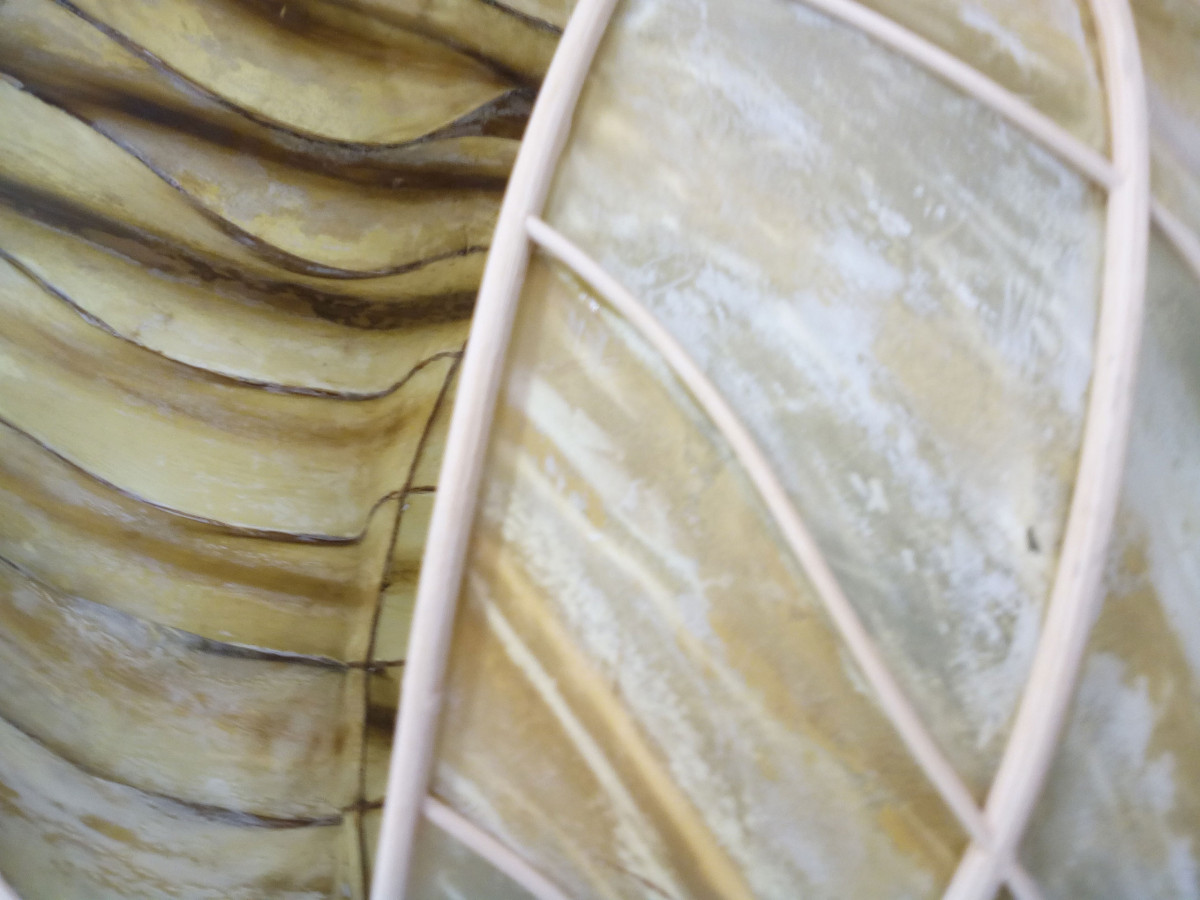
# 0008
Kombukamui Seaweed Dress
Transforming Practice, Individual Thing, Common, Polymers, Months
Socio-cultural Data
Present Uses
Julia Lohmann founded the Department of Seaweed, Aalto University, Helsinki, Finland to investigate seaweeds for novel forms of production. Experimenting with the properties of different algae led to diverse sculptural structures, clothing and other applications. With some 31 species of brown seaweeds (kelp, Laminaria species) of the North Atlantic growing to several metres or more, with many capable of rapid growth rates in the spring and summer months, there is potential to consider sustainable harvesting or sea farming methods to generate a bio-circular production approach. After all, seaweeds with their valuable trace elements and nutrients provide a valuable soil or marine fertiliser giving a second life to seaweed garments.
Technical Data
Class of Material
Polymers
Bio-temporal-geographical Data
Residence time (How long does the matter/material/artefact stay in an unaltered state in the location/context/system before it decay?)
Months
How does the item affect the environment in which it exists?
Nourish it
Ontological-cosmological Data
experimental
What can humans give back to this artefact/material/living thing/matter?
If we are going to use seaweeds to produce new artifacts then we need to ensure we harvest sustainably or cultivate them in seaweed farms in a way that does not cause harm to the local environment.